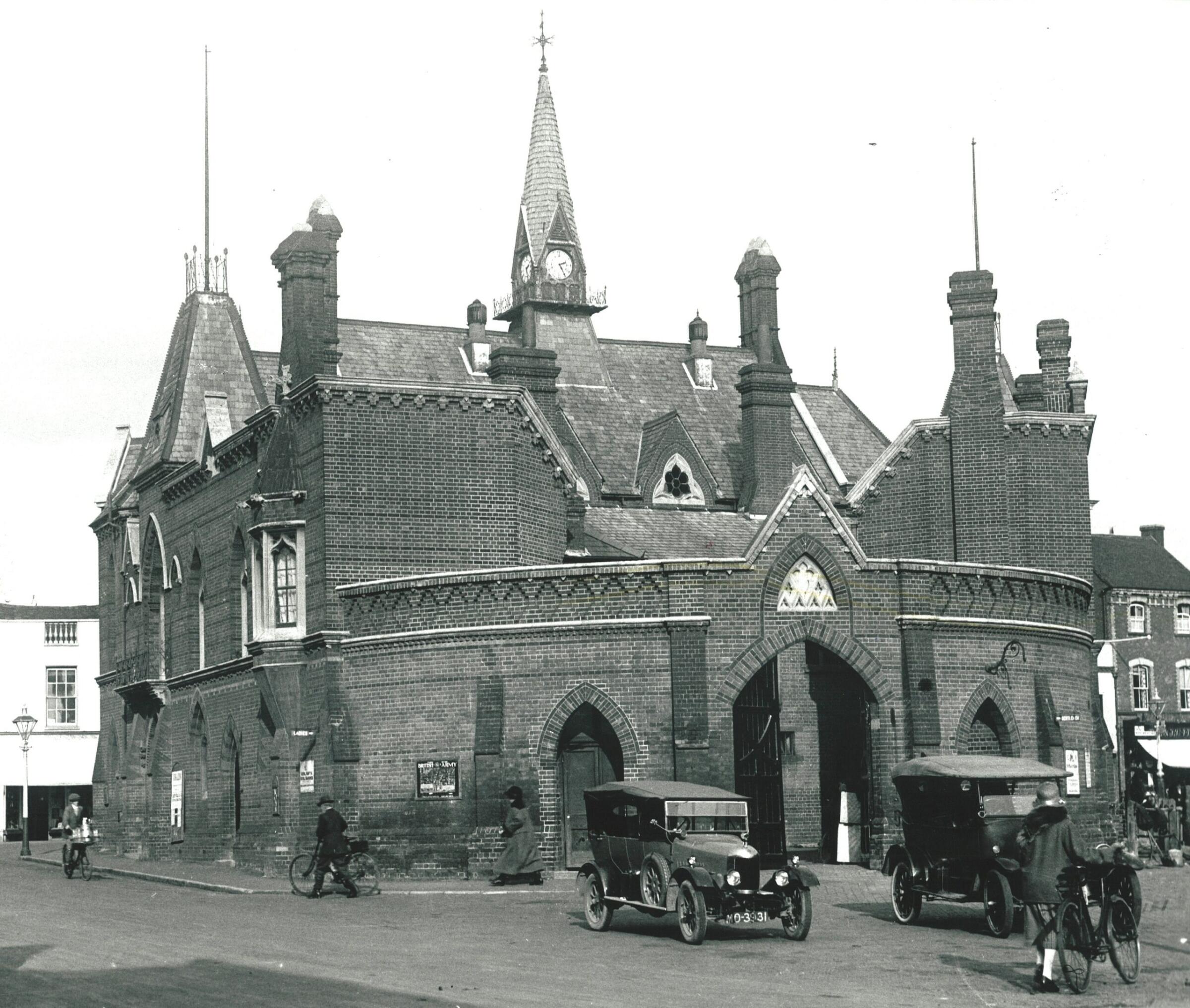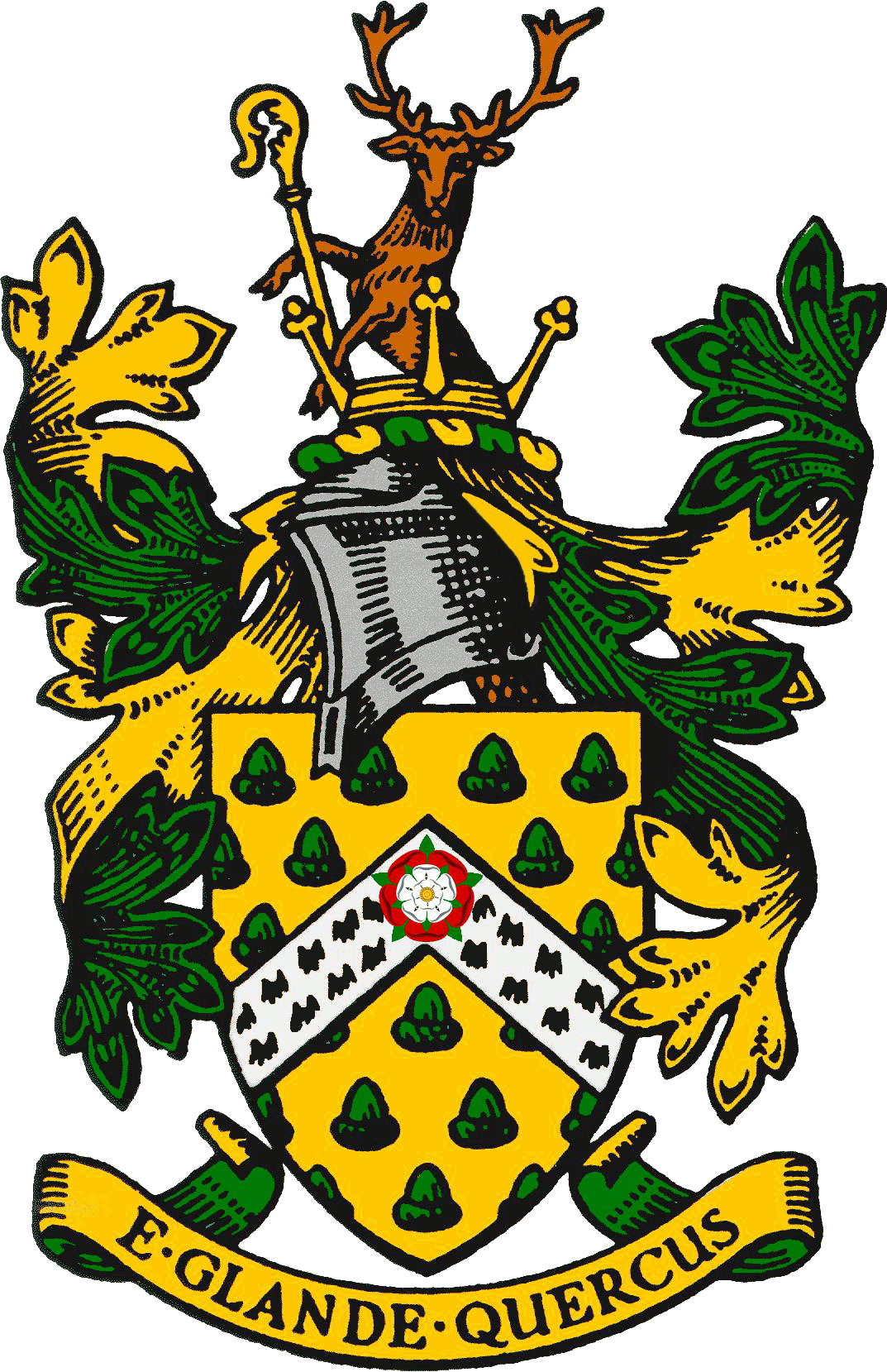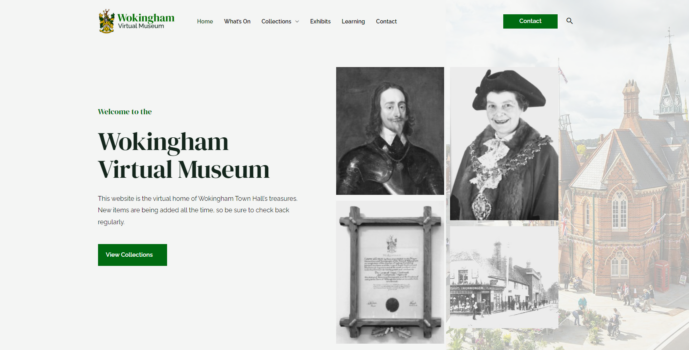Outlined below are a selection of historical resources and information managed or directly connected to Wokingham Town Council.
There are also a number of external organisations and that have resources about the town’s history. Including The Wokingham Society, who are a civic society dedicated to preserving the town’s past, present and future. Visit the Wokingham Society website for more.
Wokingham Virtual Museum
Wokingham Virtual Museum is the online home of the Town Hall’s treasures and wider history of Wokingham Town. New items and exhibits are being added all the time. You can also find information on learning resources and when the Town Hall is open for Museum Open Days.
Wokingham History App
For those who like to access via their phone there is a Wokingham History App which can be downloaded from the Google Play and Apple App stores.
The App contains:
- Virtual Tour of the Town Hall – an audio-visual commentary and tour of the Town Hall.
- Blue Plaque Trail – in conjunction with Wokingham Society, a digital version of their trail of significant historical buildings and structures in the Town.
- War Memorial Trail – a digital version of the trail of war memorials throughout Wokingham Borough’s towns and parishes.
- A portal to the Virtual Museum.
- Wokingham Mosaics – a digital version of the trail booklet of the Wokingham Town mosaics. You can also find out more about them on the Mosaics webpage.
History of Local Government
Some form of local government has been administered from the Town Hall since its opening in 1860. Major changes have been the result of national legislation to reform the structure and powers of local councils.
The Alderman & Corporation
When the Town Hall was opened in 1860, Wokingham was administered by an unelected Corporation consisting of an Alderman and about seven Burgesses. This small group met in the Annexe, although at the time it was called the ‘council chamber’.
The Borough Council with Mayor
In 1885, following the 1882 Local Government Act, Queen Victoria granted Wokingham a charter making it a ‘Municipal Borough’. This larger Council was initially elected by men of the Town. The members of the Council then elected a Mayor. With a much larger number of councillors than the previous Corporation it moved it’s meetings into the Main Hall. With an expanding population and increased powers, the council’s responsibilities grew. When the Police left in 1905, the Council bought accommodation from the County Council for offices. In 1965 much of the work was transferred to the new Council offices in Wellington Road.
The Town Council with Mayor
Under the Local Government Act of 1972 much of the administration of the town was taken over by the newly formed Wokingham District Council in 1974 (renamed Wokingham Borough Council in 2007). Wokingham remained a parish council which, in view of its historic past, was given the title of Town Council and retained its Mayor, its coat of arms, its ceremonies and base in the Town Hall. Council meetings are still held in the Main Hall and the Council Chamber while the Mayor’s Parlour and Town Council offices occupy the other rooms. Other rooms are let to businesses and organisations and the Town Hall is licensed for wedding and civil partnership ceremonies.

Wokingham Town Hall
Wokingham Town Hall was built in 1860 and replaced an older Guildhall on the site. It was initially used as a police station, courthouse and meeting space for the Corporation and later Council. More information on the history of the building can be found on the Town Hall webpage of the Virtual Museum.
You can also learn more about the fascinating history of the Town Hall by watching the videos embedded below, with expert commentary by Bob Wyatt.
The videos were produced for us by Connor Sharod-Southam (CSS-Media) on behalf of Bracknell and Wokingham College.
The Town Hall has always been available for community use when not required for official business. Dinners, concerts, lectures, displays, meetings, bazaars, sales and civil ceremonies are held in the Main Hall, with the smaller rooms being used for meetings and other functions. These rooms are all available for hire which you can find out more about on the room hire webpage.
The Town Hall is also open to the public in September as part of the National Heritage weekend.

The Coat of Arms
Arms: Or semée of Acorns Vert a Chevron Ermine thereon a Tudor Rose barbed and seeded proper
Crest: On a Wreath of the Colours issuant from a Saxon Crown Or a demi Stag at gaze proper supporting a Crosier Or.
Motto: E glande quercus
What does this mean?
Heraldry and the description of a Coat of Arms arrived at a time when Norman French was spoken. Heraldry experts still use this language to describe the parts of a Coat of Arms. We will break down the basics of what it means and why these elements were chosen below.
Arms: A field of acorns on a gold shield represents Wokingham as a forest town, An ermine chevron indicates the Royal House, A Tudor rose is part of the badge of Queen Elizabeth I and our present Monarch.
Crest: The Saxon crown reflects the Saxon origin of the district, A Berkshire stag supporting a bishop’s crozier denotes ownership of the town by the Bishop of Salisbury until 1574, when it became a Royal town.
Motto: translates from Latin to “from the acorn, the oak.”
How were the Arms granted?
The Arms were granted to the former Borough of Wokingham in 1953, Coronation Year. At a special court held at Windsor Castle on 16 April 1975, Queen Elizabeth II authorised by Order of Council that the Armorial Bearings were to be “lawfully borne and used” by Wokingham Town Council.
The Coat of Arms is granted to the Town Council by the College of Heralds. It may not be reproduced by any other person or organisation without the specific written permission of the Town Council. Please contact the Town Clerk for further information.

